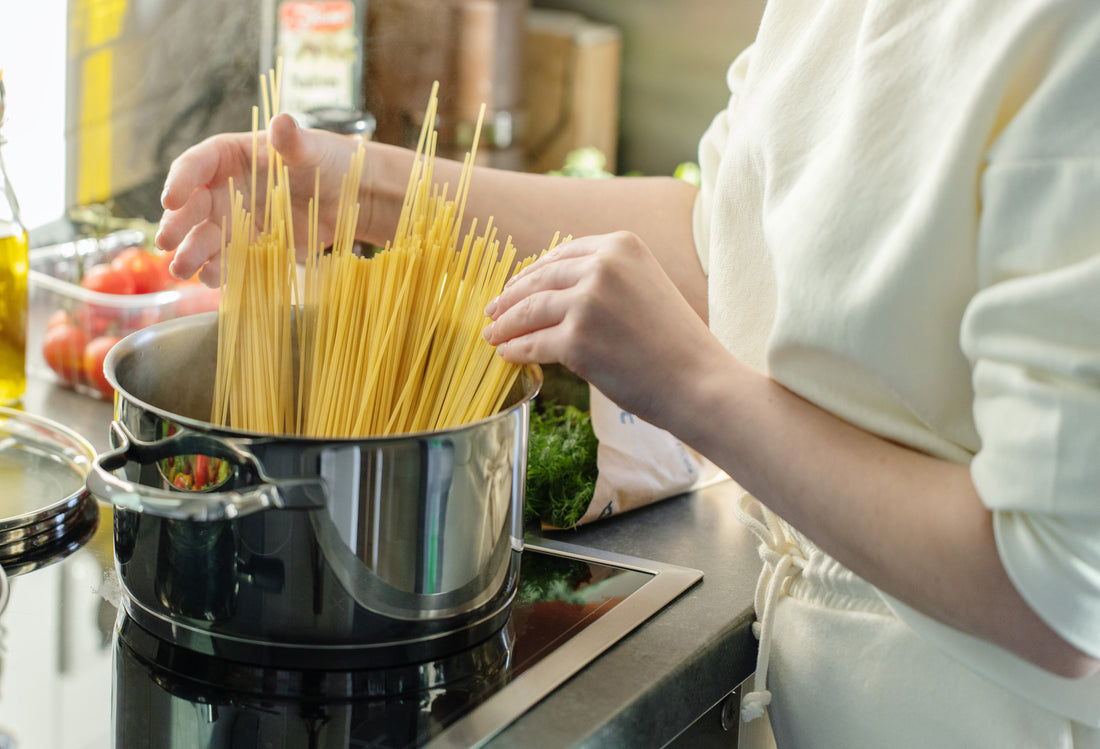Gustora's Pro Tips for Pasta Perfection
Are you tired of soggy, overcooked pasta ruining your meals? Do you dream of achieving that perfect balance between tender and firm in every bite? Look no further! As the pioneer of the pasta revolution in India, Gustora Foods is here to unlock the secrets of perfectly al dente pasta, straight from the kitchens of our pasta experts. In this guide, we'll delve into the art of cooking pasta to perfection, ensuring that every plate is a masterpiece.
- Understanding Al Dente: Al dente, meaning "to the tooth" in Italian, refers to pasta that is cooked until it is tender yet still firm to the bite. Achieving al dente texture requires precise timing and technique, as overcooking can result in a mushy texture while undercooking leaves it too tough.
- Choosing the Right Pasta: Start your journey to al dente excellence by selecting the right pasta shape for your dish. Whether it's Spaghetti, Penne, or Farfalle, each variety has its own ideal cooking time and texture. Opt for high-quality pasta like Gustora's premium range, crafted from durum wheat semolina for superior taste and texture. **Pro tip: we mention the cooking time on each of our packets. Following the lower minute count gives you perfectly al dente pasta.
- Perfecting the Cooking Technique: The key to al dente success lies in the cooking technique. Begin by bringing a large pot of salted water to a rolling boil. The perfect ratio of salt to pasta to water is "10-100-1000". 10 grams of salt to cook 100 grams of pasta in 1000 millilitres (1 litre) of water. Remember, Gustora pasta does not require oil during the boiling process.
- Timing is everything. Once the water is boiling, add the pasta and stir immediately to prevent sticking. Refer to the package instructions for the recommended cooking time, but remember that it's just a guideline. To achieve al dente perfection, start testing the pasta a minute or two before the suggested time. The pasta should be tender yet slightly firm in the centre. **Pro tip: look for a thin white line in the cross-section of the pasta to check for al dente texture.
- The Taste Test: Mastering al dente pasta requires a hands-on approach. Use a slotted spoon or fork to fish out a strand/piece of pasta and take a bite. It should offer some resistance to your teeth without feeling raw or crunchy. If it's still too firm, continue cooking and test again in 30-second intervals until you reach the desired texture.
- Rapid Cooling and Draining: As soon as the pasta reaches al dente perfection, it's crucial to stop the cooking process immediately. Drain the pasta in a colander and rinse it briefly under cold running water to halt the cooking and prevent it from becoming overcooked. Remember to save some pasta water; it will help emulsify the sauce, and the dish will turn out extra smooth and silky.
- Embrace the Sauce: Once your pasta is cooked to al dente perfection, it's time to combine it with your favorite sauce. Whether it's a classic marinara, creamy Alfredo, or zesty pesto, the key is to toss the pasta with the sauce immediately while it's still warm. You can add some reserved pasta water to bring everything together. This allows the pasta to absorb the flavours and ensures a harmonious marriage of textures.
- Garnish and Serve: Finish off your masterpiece with a flourish of fresh herbs, a sprinkle of grated Parmesan cheese, or a drizzle of extra virgin olive oil. Serve your al dente pasta hot and enjoy the satisfying texture and flavours that only Gustora can deliver.
In conclusion, mastering the art of al dente pasta is within your reach with Gustora's expert tips. By choosing the right pasta, perfecting your cooking technique, and embracing the principles of al dente perfection, you'll elevate your pasta dishes to new heights of culinary excellence.
Say goodbye to soggy pasta nightmares and hello to tender yet firm pasta perfection, courtesy of Gustora Foods. Buon Appetito!


